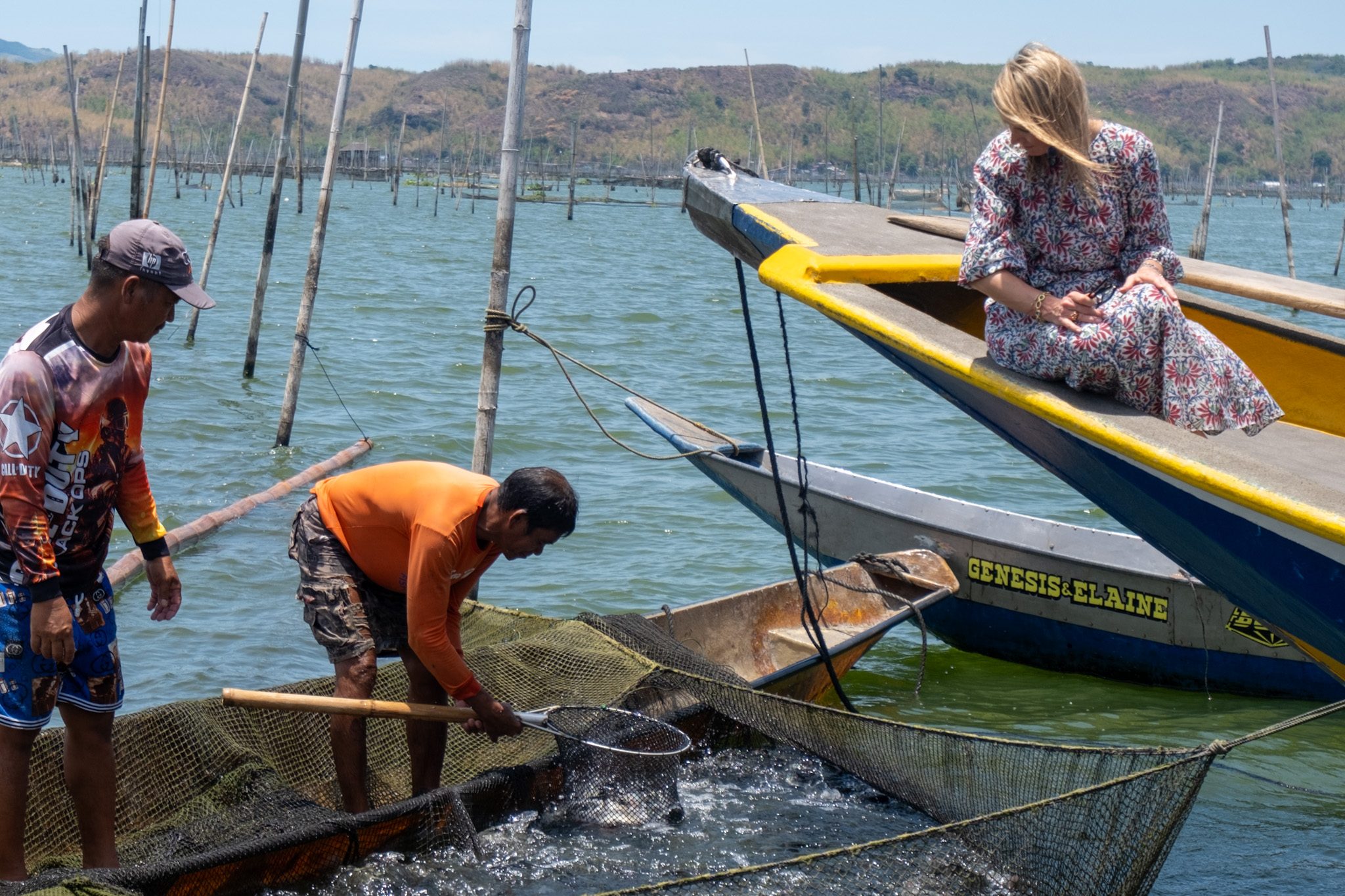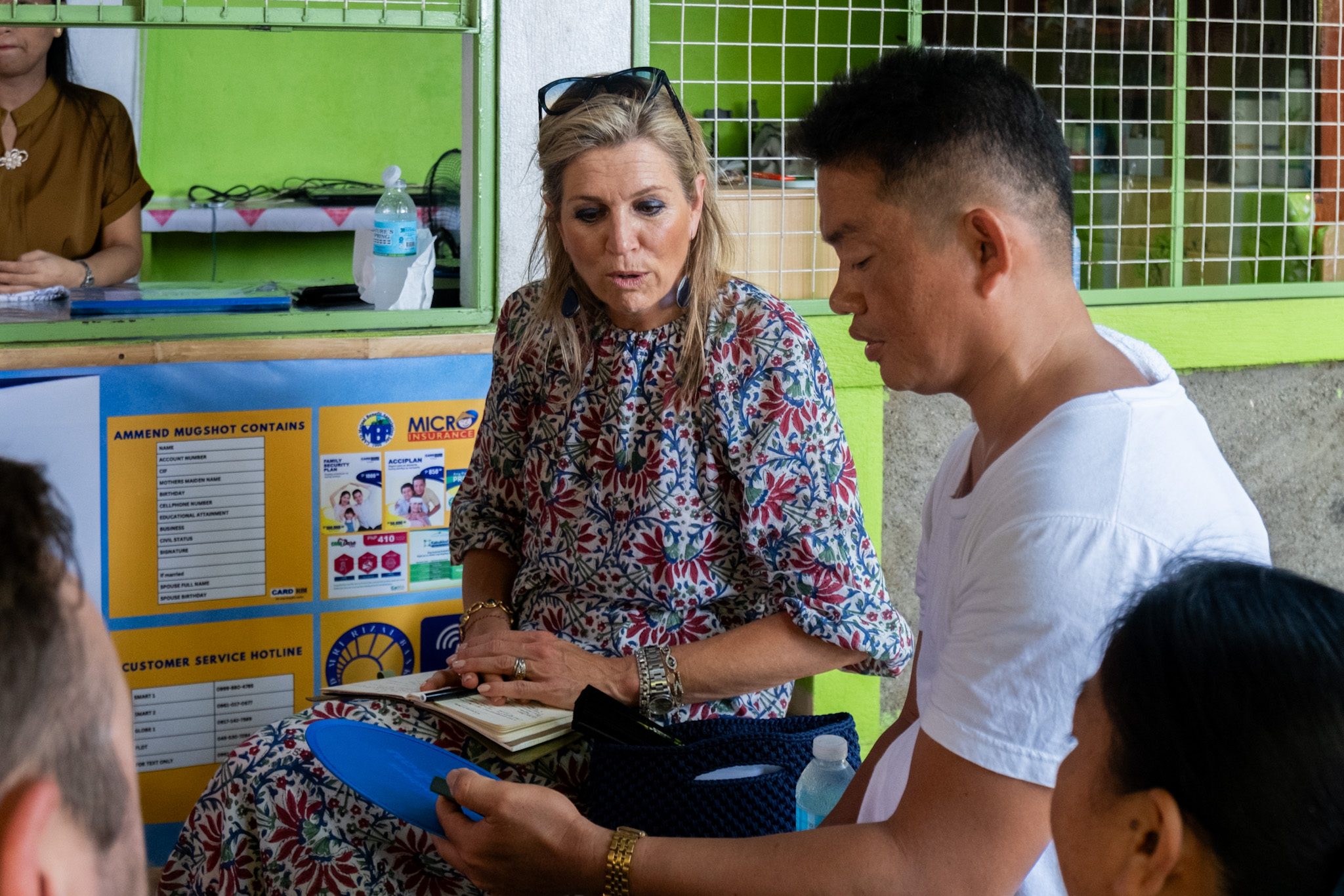SUMMARY
This is AI generated summarization, which may have errors. For context, always refer to the full article.

MANILA, Philippines – More than half of Filipinos now have a bank account, but if you ask Queen Máxima of the Netherlands, there’s so much more to be done.
Máxima is visiting the Philippines in her role as the United Nations Secretary-General’s Special Advocate for Inclusive Finance for Development (UNSGSA). On her first day, the Queen rode a boat to a fishing community in Laguna de Bay, crouched into a narrow sari-sari (general merchandise) store in Cainta, and spoke to tycoons at the headquarters of GCash.
Her message: financial inclusion needs to reach everyone.
Máxima first visited the Philippines in 2015, also in her capacity as the UN’s special advocate. Back then, the status of financial access in the country was dire, with only 31.3% of Filipino adults having a bank account. The latest data in 2021 show significant progress, with that figure now climbing to 51.4%.

“Now, there’s a reason why I’m back here. It’s because, of course, there’s still a good 40% of the population that actually don’t have access,” Máxima told reporters in a brief interview on Tuesday, May 21.

“And that is clearly the people that are more far away, the farmers, also more women, and also the ones that are far away. So we need to do a lot more work on that side,” she added.
A possible model for inclusive finance in rural communities is Talim Island. The lake island that sits in Laguna de Bay is home to more than 40,000 people, many of whom make their livelihood off fishing.

Although Talim Island still falls within the jurisdiction of Binangonan, Rizal, it is separated from the mainland by a 25-minute boat ride. The island itself also doesn’t have a strong formal banking network present.
During the field visit to Talim Island, residents told Máxima that they used to spend 2 hours and around P200 just to travel to the mainland and transact at a bank, which serve as barriers that prevent them from accessing formal financial services.
CARD MRI Rizal Bank (CARD-RBI), a rural bank that focuses on microfinancing, is starting to change that. The rural bank has set up a branch-lite unit on the island and has six active agents to serve its 1,350 clients in the community. These customers maintain a total of more than P15 million in outstanding loans and P4.9 million in savings.

CARD-RBI also has its own mobile app, konek2CARD, that allows residents to do savings and loan balance inquiries, fund transfers, and agent-assisted transactions without having to make the long journey over water.
That has allowed some residents, like fisherman Leonel Alviso, access to funding for his livelihood. In over two years, Alviso loaned a total of P130,000 from CARD-RBI to successfully expand his fish cage business. He has doubled the number of fish cages that he has from 10 to 20, earning about P50,000 every 3 months.

“We went to visit basically some fishermen. And they were explaining to me how important not only the credit has been for them, because it actually allowed them to do that. It allowed them to grow and now to invest even more and expand their income,” Máxima told reporters.
“They were telling me, of course, what a big difference, certainly if you live in an island, that you can do this from your phone,” she added.
Besides improving financial access through technological solutions, the queen also wants improved insurance coverage to help “develop the resilience of farmers and people alike,” especially in a country like the Philippines that is more prone to climate change shocks. (READ: Is the Philippines prepared for El Niño?)

Máxima also visited a sari-sari store in Cainta, Rizal, where store owner Aubrey Udag explained to the UN special advocate how a tech-enabled B2B platform called GrowSari aided the growth of their store. The service offers on-demand inventory access with free delivery for certain orders and a five-day grace period to settle payments.
Through GrowSari, Udag has placed more than 300 orders, each worth an average of P259, which is enough to qualify for free deliveries. These small but frequent orders have eased cash flow constraints on her microbusiness and has even allowed her to expand, opening up another store across the street.

Queen Máxima ended her field visits with a meeting at the headquarters of GCash, the most prevalent e-wallet service in the Philippines. About 94 million Filipinos, or 8 in every 10, have downloaded or tried using the Ayala-affiliated service.
The Queen proceeded to a closed-door discussion with GCash president and chief executive officer Martha Sazon, Globe CEO Ernest Cu, and Ayala Corporation director Fernando Zobel de Ayala. Although details of what exactly were discussed have not been made public, Máxima did hint to the media earlier that she believed transaction fees for digital payments were still high.
“It is still kind of expensive to do some of the work. We have to look at the payments. That’s why people keep on using cash. So we have to look at the affordability of those payments and all the services that are actually being given,” Máxima told reporters. – Rappler.com
Add a comment
How does this make you feel?








There are no comments yet. Add your comment to start the conversation.